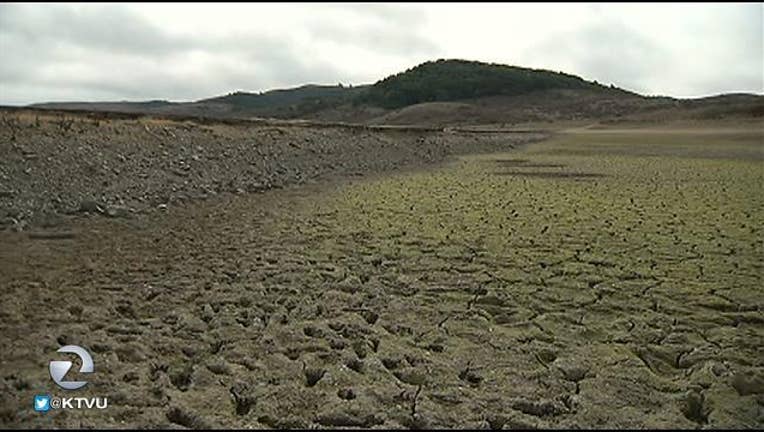RUNNING DRY: History of mega droughts in California

We may nervously laugh at Carson's California weather humor, but the reality is another rainy season is coming to a close with but most totals falling well short of season averages. If it wasn't for a few wet weeks in December, the season would have been a disaster.
This year, San Francisco experienced their first January since records began in 1849 where no rain fell. That was followed by the warmest February on record with the average temperature was nearly four degrees about the norm.
In fact, San Francisco has seen 13 straight months of normal to above normal temperatures as the Sierra face another year of declining rainfall and lackluster snow. The US Drought Monitor shows the region is under severe to exceptionally dry conditions.
"It's already the fourth year of the drought and we don't know when it's going to end," said Peter Gleick, President of the Pacific Institute. "And we do know there is past history of very long periods of dry records of low precipitation."
Most droughts last a few years but nature shows us that mega droughts lasting 50 to 100 years have hit California before. We know this by looking at tree rings. Redwood trees and bristlecone pines, which grow in the Bay Area, have captured the history of drought for decades.
UC Berkeley Paleoclimatologist and author of "The West Without Water", Professor B. Lynn Ingram explained it this way.
"So [with] wetter and wetter conditions, the tree is going to grow more and you are going to have a thicker ring than during a dry year," said Ingram. "So during a dry year, you are going to have a thin ring. Sometimes when it's really dry, there is no ring at all. No growth at all."
Paleoclimatologists can also look at soil sediment samples from the bay to understand the past. They show high amounts of salt water during the dry years and more fresh water during a wet year. California hasn't been this dry in nearly five hundred years.
"We saw that there was several hundred years during the medieval warm period the bay was actually saltier for several hundred years. The surrounding marshes turned into vegetation that became more salt adapted," said Ingram.
One thing that could end a mega drought would be a super storm. They occur in California about every two hundred years or so. The last one was in 1861-1862. One hundred and two inches of rain fell in the Central Valley, putting Sacramento under water for months.
Many scientists believe we are long overdue for a super storm to drench us again. But until then, we are in for a long dry wait.
The storms which did bring us rain back in December were warm and did little for the Sierra snowpack. In fact, most of the snow melt is already gone. The water content was at its lowest late-March level since records began in 1950 at just six percent.
There's no telling how long our current drought could last. The tree rings show that our region has been through much worse for much longer. But with the demands that mankind is putting on our water resources now, it could mean we're accelerating the natural cycle of mega droughts.
We can't rely on Mother Nature to replenish the supply of water anytime soon. The choices we make now could determine whether the past is likely to repeat itself.
"I am optimistic that we can solve our water problems. I am not so optimistic that we are going to," said. "California's water is a contentious issue. We fight over water; we always have."
Let's hope we win this fight.

